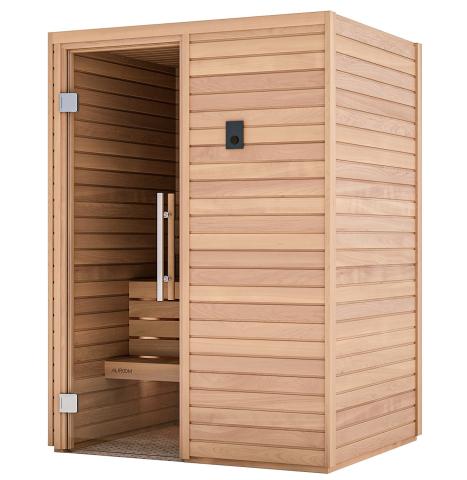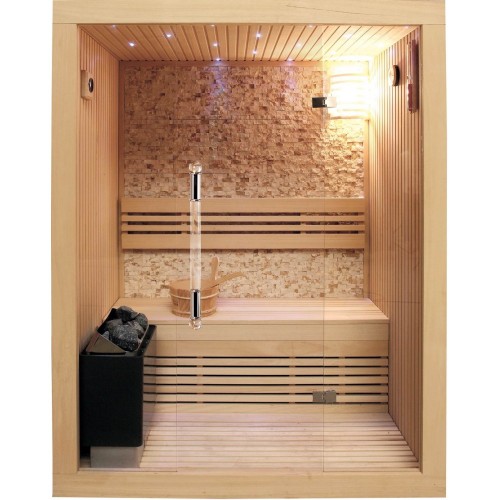The Buzz on Traditional Sauna
Table of ContentsThe Definitive Guide for Traditional SaunaHow Traditional Sauna can Save You Time, Stress, and Money.The Ultimate Guide To Traditional SaunaOur Traditional Sauna IdeasAn Unbiased View of Traditional Sauna
The majority of the weight shed in a sauna is water loss and is re-gained upon rehydrating. Without a question sauna can be an essential component of a healthy weight loss program. To consider the distinctions between typical and IR saunas, I will divide these into proven, theoretical, and produced differences.
Hence, the most popular point in the saunawhich goes to the ceiling directly over the sauna heateris commonly in between 185 and 190 F. Claims that a typical sauna surpasses 200 F is simply not real and not applicable for electrical saunas sold in the United States. The temperature for a far-infrared sauna is generally established in between 120 and 140 F; however, unlike the typical sauna, the goal in and IR area is not to achieve a heat.
Due to this, the temperature level difference is nearly irrelevant, because extreme sweating leads to both sauna kinds, but the technique of heating up the body is different. In an IR sauna the bather will really feel hot and will sweat profusely, however at a lot lower temperatures (Traditional Sauna). Hence, if the goal is to invest longer amount of times in the sauna, the IR sauna is a great selection
When a conventional sauna has actually been appropriately warmed, the sauna walls are warm, the air temperature has actually attained set temperature and the rocks are incredibly warmed. As an interesting side note, the warmed wall surfaces and the rocks are discharging far-infrared warmth, combined with the warmed air, to create an "enveloping warm".
How Traditional Sauna can Save You Time, Stress, and Money.

When the high temperature is accomplished, the aspects cycle on and off to preserve the heat. The majority of typical sauna customers appreciate putting water over the rocks to produce heavy steam to raise sauna moisture degrees. The benefits of putting water over the rocks consist of: making the room more comfortable, dampening the nasal passages, and allowing the usage of aromatherapy by mixing crucial oils with the water.

When the power goes into the body, it creates the body temperature to enhance and eventually leads to perspiration. In an infrared sauna it is very important for the emitters/heaters to remain on nearly continuously. Given that there is no mass of rocks to keep warmth, the sauna will cool down if the emitters closed off.
As stated over, the sauna bather in an infrared room wishes to position himself before running emitters to get optimal take advantage of the warm. The heating time for both areas can be very different, relying on exactly how the rooms are used. For a typical sauna, a bather ought to enable 30-40 minutes for the area to achieve a preferred temperature level and to properly pre-heat the rocks.
The Traditional Sauna Statements
A well created sauna will typically achieve a temperature level of 150-160 F in look here concerning 30-40 mins. For hotter temperature levels, the room might require to warm for a longer period.

Conventional saunas often tend to be bigger (thus make use of even more electrical energy) than infrared saunas, although conventional saunas are absolutely offered in one and two individual dimensions also. For a two-person traditional sauna, 5x6 or 5x7 dimension is most prominent. The top bench can pleasantly seat two or 3 people and is additionally enough time to lie down throughout the sauna session.
Our Traditional Sauna Ideas
The average cost per kWH of electrical energy in the united state is approximately $0.11, so a 4.5 kW heating system will certainly cost roughly $.50 to compete one hour, if the heating system runs continuously for one hour. Typically a sauna heating system will certainly compete 75% of the first hour and index 50% of succeeding hours on given that the components cycle once the established temperature is achieved.

There is a hardly ever reviewed distinction in the social experience between the two areas. While our society has shed several of the social advantage of the standard sauna experience, it can be really socially satisfying (Traditional Sauna). From family time in the sauna, to heart-felt conversations with better halves, to sauna partiesthe traditional sauna experience can cause intimate interacting socially
Traditional Sauna Things To Know Before You Buy
Many greater end infrared areas include tinted light treatment, noise systems and full-glass fronts.
Comments on “The Buzz on Traditional Sauna”